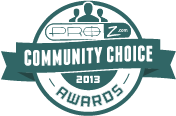Many times, being a language professional feels like being an endurance athlete. Your client sends you the document, you open it with nervous anticipation and see an enormous amount of words in a very difficult and research-intensive subject matter to be translated very, very quickly. At first, it seems like an overwhelming and impossible task. Here's where our endurance athlete attitude comes in. As they say in some ads: impossible is nothing.
The way we tackle projects that are very large, very difficult, or very challenging and have a fast turnaround is the same way we approach running: by putting one foot in front of the other. It's amazing how documents on say, hedge funding, water desalination plants, banking rating systems, esoteric management principles, and bone marrow reports don't seem as daunting once you have translated a few sentences.
I apply the same principle to my half marathon running. Every year, it seems completely impossible to make my legs run 13.1 miles. Now on year #4 and just having finished half marathon #6, I know it's definitely possible. It really does start with one step, literally or figuratively. I can't tell you that I was conjugating verbs in my head for fun as I was running my way towards my Las Vegas Half Marathon medal (in 2:16, for the record), but I did ponder, for 13.1 miles, how similar two of my passions are. Both translation and running are all about endurance, determination, getting it done, not getting discouraged, and pushing through it when things are hard. That, and not giving up. Quitting is not an option, neither during my half marathons (it's not like you can hail a cab) or with a project you have decided to take on.
Perhaps a study on running and translation is in order. How many translators are also endurance athletes? I have heard from many fellow translators that excercise is a big part of their life. For others, it's difficult to fit it in. What's your experience? Or is being a translator enough of an endurance sport that you don't need a second one?
The way we tackle projects that are very large, very difficult, or very challenging and have a fast turnaround is the same way we approach running: by putting one foot in front of the other. It's amazing how documents on say, hedge funding, water desalination plants, banking rating systems, esoteric management principles, and bone marrow reports don't seem as daunting once you have translated a few sentences.
I apply the same principle to my half marathon running. Every year, it seems completely impossible to make my legs run 13.1 miles. Now on year #4 and just having finished half marathon #6, I know it's definitely possible. It really does start with one step, literally or figuratively. I can't tell you that I was conjugating verbs in my head for fun as I was running my way towards my Las Vegas Half Marathon medal (in 2:16, for the record), but I did ponder, for 13.1 miles, how similar two of my passions are. Both translation and running are all about endurance, determination, getting it done, not getting discouraged, and pushing through it when things are hard. That, and not giving up. Quitting is not an option, neither during my half marathons (it's not like you can hail a cab) or with a project you have decided to take on.
Perhaps a study on running and translation is in order. How many translators are also endurance athletes? I have heard from many fellow translators that excercise is a big part of their life. For others, it's difficult to fit it in. What's your experience? Or is being a translator enough of an endurance sport that you don't need a second one?
























0 comments:
Post a Comment